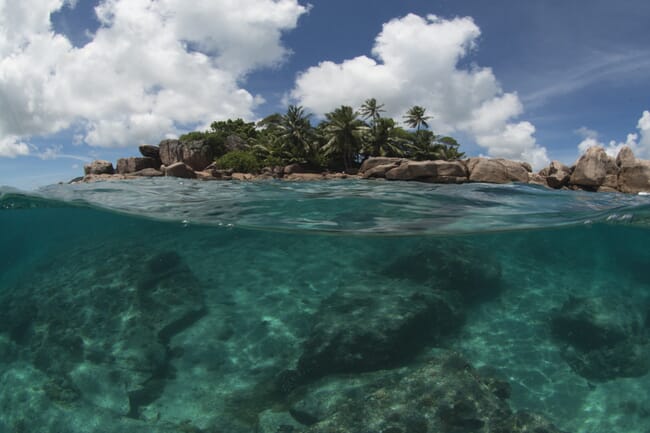
“At the end of the day, carbon dioxide removal is ocean conservation,” Brad Ack, chief innovation officer of Ocean Visions told delegates at the recent World Ocean Summit. Ack, who transitioned to ocean biodiversity conservation mid-career, explained that though we’re in a global race to preserve marine ecosystems, we’ve been outpaced by the larger changes in the climate.
Surplus carbon dioxide is heavily concentrated in the upper layer of the ocean. This additional CO₂ contributes to excess heat that is driving marine heatwaves, changes in ocean currents, species migration and ocean acidification. Ack told delegates that the body of heat is roughly equivalent to five atomic bombs worth of heat going into the ocean every second.
In his estimation, the oceans have suffered some of the most egregious damage to the biosphere from excess CO₂. If left unchecked, these shifts in the ocean environment could lead an ecologic and economic cataclysm. For those in the aquaculture industry, it could mean trying to produce fish, crustaceans, molluscs and macroalgae in an increasingly hostile environment. For coastal populations in the Global South, changes in the ocean environment have dire implications for food security and local infrastructure.
“The ocean is a critical part of the climate. The ocean crisis and the climate crisis are one and the same thing. They’re simply two sides of the same coin,” Ack told Oliver Morton, The Economist’s briefings editor.
Ack explained that humans have put about 30 percent of this excess carbon into the ocean and that these changes will only continue as greenhouse gas (GHG) concentrations continue to rise. At this point, reducing overall concentrations of GHGs is essential and learning how the ocean can help reduce atmospheric carbon is the next practical step.
How can the ocean remove atmospheric carbon?
Ack explained that the ocean stores 50 times more carbon in bicarbonate and carbonate forms – like shellfish, seagrasses and seaweeds – in the bottom of the sea than what’s in the atmosphere today. This means that with minor tweaks that lead to increases in overall carbon storage, the ocean can make a huge dent in our collective carbon removal efforts.
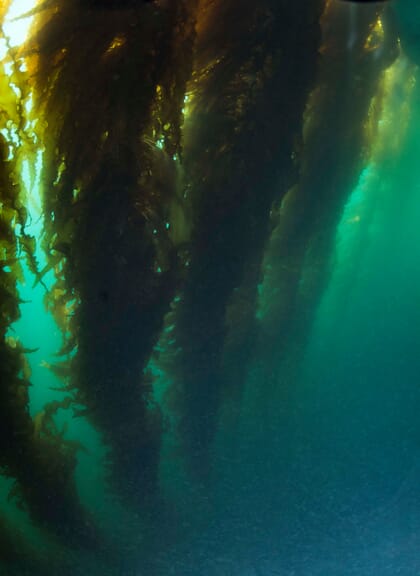
Broadly speaking, the ocean cycles carbon in two patterns. One is chemical – where ocean water interacts with alkaline material to make it less acidic. Over millennia, these geologic processes allow the ocean to store carbon in safe forms in the benthic zone.
The other form of carbon cycling is biological – where photosynthetic organisms like microalgae, seaweed and mangroves capture carbon and keep it at the bottom of the sea. If carbon is stored in the seabed, it will remain inert and no longer contribute to global warming.
Of these pathways, the research community still doesn’t know which ones will be the most successful – or the least harmful. Ack and other ocean stakeholders need additional research and development, with multiple replicates to answer the question. He also stresses that those potential solutions need to be tested in different marine environments to ensure they cycle as much carbon as possible.
What does ocean CO₂ removal look like?
“[Think about it as an] antacid for an ocean that is in severe distress,” Ack responded when asked about specific de-carbonising methods. “We’ve put all this acid into the ocean – that’s what CO₂ is, it makes the ocean more acidic – we’ve got a very upset ocean, [so an] antacid could possibly help to reverse that acidification problem.”
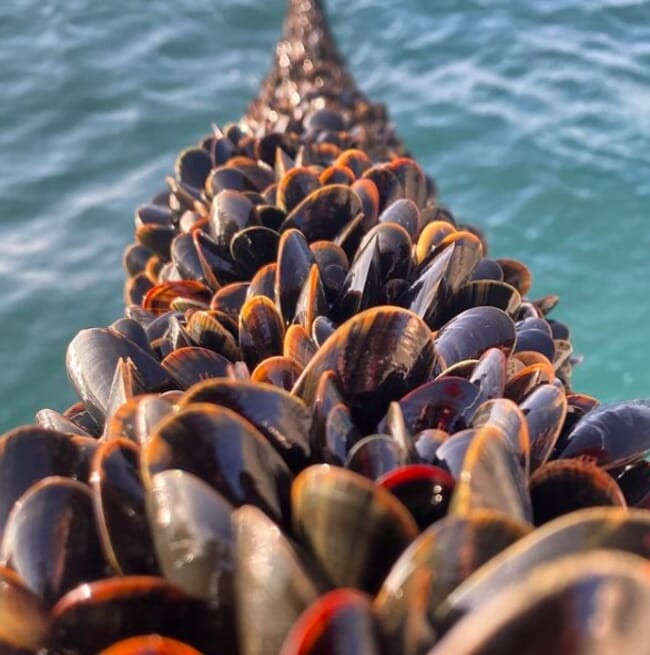
Though this might conjure images of ships dumping quicklime into the sea, Ack assured the audience that this wasn’t what he had in mind. His startup, Ocean Visions, is working on “roadmaps” that outline key technologies and strategies to de-acidify and de-carbonise the ocean. When it comes to enhancing ocean alkalinity, seaweed cultivation is emerging as a viable strategy – but Ack stressed that more research and development (R&D) was needed before he could give macroalgae production a full-throated endorsement.
He told Morton that Ocean Visions was convening global experts in technology pathways, ocean health and marine policy to assess the current de-carbonising approaches and outline the critical priorities for advancing our knowledge. Ideally, this would enable additional R&D that would lead to a credible governance framework for carbon removal. As part of this, he called for credible, verifiable and regulated carbon removal standards. “We’ve got to move beyond the hodgepodge of the voluntary carbon market that we see around the world,” Ack said.
He likened the rapid scaling of R&D efforts to the world’s approach to the Covid-19 pandemic in 2020. The monumental push and global cooperation on vaccine research, novel therapies and drug treatments stands out as a key bright spot in the crisis. The world is currently in a race against dangerous climate change and – in Ack’s view – would benefit from similar urgency.
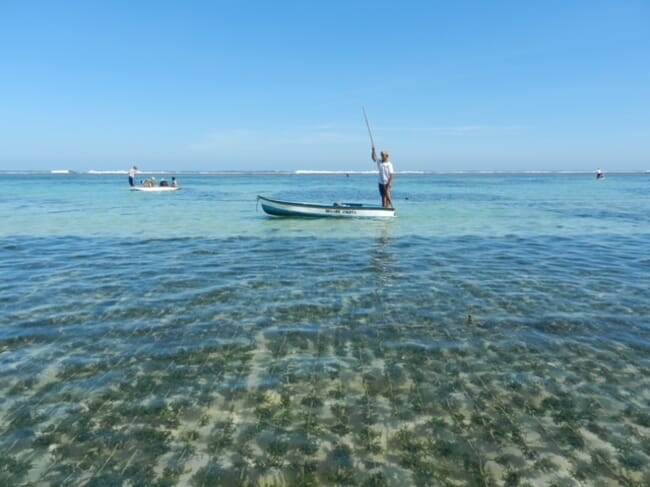
© Thierry Chopin
Reassessing the moral hazard argument
The ocean’s ability to store and potentially sequester carbon presents a wealth of opportunities, but it also comes with an uncomfortable undercurrent. Given its capacity store carbon and regulate the climate, is harnessing this potential giving bad actors a way to skirt the hard work of cutting their GHG emissions?
“I used to worry about that,” Ack began, “but then I watched for decades as we didn’t give people that easy out and they continued to spew carbon into the atmosphere.”
He has a point – advocates have been pushing political agreements to reduce CO₂ emissions for the last 40 years, yet global emissions keep increasing. “To not talk about climate impacts and what we can do about them, to me, seems to be missing a very large part of the needed agenda,” he said.
Instead, Ack tells stakeholders to flip the moral hazard argument on its head. The hazard is not taking action to reverse the enormous damage we’ve done to the planet. Talking about carbon removal isn’t enabling polluters, it only prevents us from acting when we have the chance.
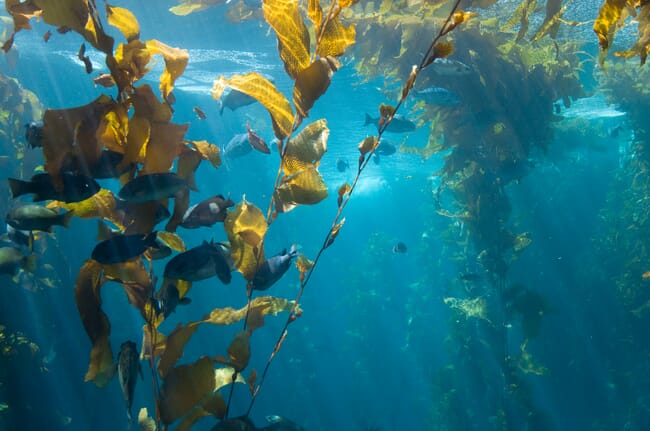
© Umitron
What can marine stakeholders do now?
Ack believes that rapidly scaling the R&D effort is a necessary first step. Ocean Visions is currently accepting proposals for science on ocean alkalinity enhancement – a $10 million funding opportunity that hopes to identify approaches that safely, permanently and cost-effectively sequester atmospheric carbon at scale. Ack stressed that Ocean Visions isn’t advocating for any specific decarbonisation strategy at present. “We don’t know enough yet to deploy them,” he explained, but he wants to get the best minds together to make progress on the issue.
Ack also acknowledged that the existing governance structure for international waters might need to be re-assessed if ocean CO₂ removal gains traction. Contributions from maritime industries like aquaculture will be essential for testing and verifying de-carbonisation strategies. The existing laws that govern what individuals can do in international waters – the London Convention – might need expanded language around research to make inroads in this area.
Ack and Morton both agreed that the potential in the space is enormous. If the oceans can be effectively harnessed for CO₂ removal, we can collectively benefit from a healthier marine environment that sequesters atmospheric carbon while shoring up global food security. However, the best strategies to unlock the ocean’s potential are unknown. Seaweed growers and blue carbon advocates still have a long way to go before they can be deployed as climate mitigation solutions.
“There are no free lunches at this point in the pollution of our planet,” Ack said. “We have randomly engineered the planet to within the brink of disaster by pouring every waste product we’ve created into the biosphere. Now it’s going to take conscious intervention [and] conscious engineering to get ourselves out of this,” he concluded.
The Economist World Ocean Summit was held from 1 to 4 March.




